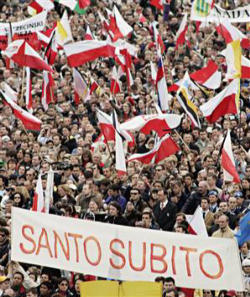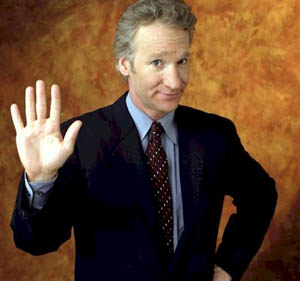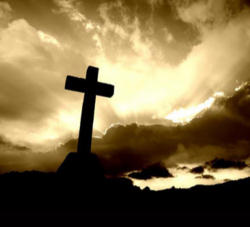The Congregation for Divine Worship and the Sacraments, the Office within the Vatican which oversees all worship in the Church throughout the world, issued a decree on April 12, 2011 directing that the late Pope John Paul II be remembered in a memorial every year. Another Feast day in the liturgical calendar of the Catholic Church will be observed on October 22, 2011, dedicated to the memory of Blessed John Paul II.
On October 22, 1978 a young, vibrant Polish Pope stepped out on to the balcony in St. Peters Square and signaled his mission with those memorable words: “Be Not Afraid! Open up, no; swing wide the gates to Christ. Open up to his saving power the confines of the State, open up economic and political systems, the vast empires of culture, civilization and development…. Be not afraid!”
His writings were vast, 14 Encyclicals, 15 Apostolic Exhortations, 11 Apostolic Constitutions, 45 Apostolic Letters and five books, “Crossing the Threshold of Hope” (October 1994), “Gift and Mystery, on the fiftieth anniversary of my ordination as priest” (November 1996), “Roman Triptych” poetic meditations (March 2003), “Arise, Let us Be Going” (May 2004) and “Memory and Identity” (February 2005). He promulgated the Catechism of the Catholic Church. He reformed the Eastern and Western Codes of Canon Law.
His magisterium (teaching office) set a framework for what is becoming under his successor, Pope Benedict XVI, a new missionary age of the Catholic Church throughout the entire world. His teaching helped to bring about an authentic renewal of the Church. It reasserted the mission of the Church to engage and transform all of human culture, including the arts, politics, the academy, and economic and political realm – because no area of human experience is “off-limits” to the influence of the Gospel and the Church.
Pope John Paul II called all men and women to the Redeemer, Jesus Christ. He reminded us that only in Jesus Christ can we discover the purpose and fulfillment of human life. He proclaimed that human existence itself is an invitation to communion with God and with one another. He told an age bent of “self fulfillment” that true human fulfillment only comes from giving ourselves in love to God and to one another. He called us to live a unity of life, wherein the implications of the Christian faith inform the entirety of life with no contradiction or separation.
He confronted, exposed and opposed the “culture of death”, wherein the human person is treated as an instrument to be used rather than an unrepeatable gift to be received. He proposed a different way, building a new “culture of life” where every human person, at every age and stage, is recognized as having an inviolable dignity and right to life, freedom and love.
He charted a path to peace and solidarity, proclaiming to the nations that we are all our brothers’ keeper and that we owe an obligation in solidarity to one another and, most especially, to the poor in all of their manifestations. He wrote of authentic freedom as a freedom “for” and not just a freedom “from”, a freedom that must be bounded by truth and lived in accordance with the moral understanding of our obligation to do what is right.
He exposed what he called in his Encyclical “The Gospel of Life” the “counterfeit notion of freedom” as a raw power over others. He countered the false notion of the autonomy of the individual as the measure of a “freedom” to do whatever one wants by insisting that the path to human flourishing is communion.
He proclaimed a new and true humanism, reaffirming that we were created in the Image of God, made for communion. He insisted that through applying the treasury of the social teaching of the Catholic Church – in our relationships with one another, in our families, in our societies, our nations and in the global community – authentic justice and freedom can actually be achieved.
Entrusted for twenty six years with the Chair of Peter, Pope John Paul II was a prophetic Pope in both word and deed. From his first encyclical letter entitled “The Redeemer of Man” to his last, the “Church of the Eucharist”, he proclaimed that the truth is, as he wrote in his profound Encyclical Letter on the Moral Life, a “splendor”.
He called for reconciliation among separated Christians in “May They Be One” and a new model of full communion with the Church which is beginning to be implemented under Pope Benedict XVI with the creation of Anglican Ordinariates as an example. With deep love for the “Light of the East” he called Eastern and Western Christianity to rediscover their dependence upon one another in order that the entire Body of Christ might once again breathe with “two lungs” and present the whole Jesus Christ to a world that needs to be liberated.
On April 2, 2005 at 9:37 p.m. this dearly beloved Pope died in the Lord while the whole world watched, prayed and wept. Almost immediately upon his passing throngs of the faithful gathered in St Peters Square and began a chant which continues in the hearts of millions throughout the world “Santo Subito”, Sainthood Now!
Pope Benedict XVI signed a decree recognizing the late Pope John Paul II’s life of “heroic virtue” on December 19, 2009 and the late Pope was given the title of “Venerable.” In April of 2009 Pope Benedict XVI, told Pilgrims gathered in Rome “With you, I pray for the gift of beatification”. That prayer has now been answered.
Friday, January 14, 2011 the Holy See released the “Decree for the Beatification of the Servant of God John Paul II” which can be read in its entirety here. Sunday, January 16, 2011, Pope Benedict XVI, announced “On 1 May I will have the joy of proclaiming the Venerable Pope John Paul II, my predecessor, as a blessed. The date chosen is very significant because it will, in fact, be the second Sunday of Easter which he himself dedicated to Divine Mercy and on the eve of which his earthly life came to an end…Those who knew him, those who respected and loved him cannot but share in the Church’s joy at this event.”
In the last ten centuries of Church history no Pope has beatified his predecessor. From the beginning of Pope Benedict’s pontificate it has been clear that he has longed for this day. On April 3, 2011 at another Angelus, he told the faithful who gathered of his memories of the late John Paul II, “I remember him in prayer with affection as I think of you all. While we journey through Lent and prepare for the feast of Easter, we come with joy to the day when we will also venerate as a saint this great pope and witness of Christ, and rely even more on his intercession.”
The choice of the Feast of Divine Mercy, May 1, 2011 for this beatification was intentional. Pope John Paul II had a deep devotion to his fellow Pole Sr. Faustina Kowalska and to the Divine Mercy devotion identified with her. In August 2002, in Lagiewniki, Poland where Sr. Faustina lived and died, John Paul II entrusted the entire world “to Divine Mercy, to the unlimited trust in God the Merciful.”
The Decree of Beatification notes, “Since the beginning of his pontificate, in 1978, John Paul II often spoke in his homilies of the mercy of God. This became the theme of his second encyclical, Dives in Misericordia, in 1980. He was aware that modern culture and its language do not have a place for mercy, treating it as something strange; they try to inscribe everything in the categories of justice and law. But this does not suffice, for it is not what the reality of God is about.”
There is no doubt that we had a saint in our midst. A man so filled with Jesus Christ that, like the Apostle Paul, he no longer lived but “Christ lived in him.” (Galatians 2) The sentiment of the faithful expressed on the day on which his body was processed through the streets of Rome, “Santo Subito” has echoed as the Church has discerned the cause of his canonization. Now, he will be raised to the Altar on the Feast of Divine Mercy and the faithful will call him “Blessed John Paul II.”
The final step to his canonization is an attested second miracle. There is little doubt that soon, we will affirm what the multiplying miracles effected by his continued intercession confirm, John Paul II is a Saint.


